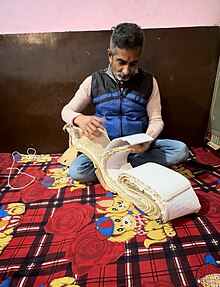Hindu genealogy registers at Haridwar

Genealogy registers of families, maintained by Brahmin Pandits known locally as ‘Pandas’, who work as professional genealogists, at Haridwar, have been a subject of study for many years.[1][2] In several cases, these voluminous records known as Vahis (Bahi), have also been used in settling legal cases regarding inheritance or property disputes, as these records are considered sacrosanct both by the pilgrims and the Pandas themselves,[1] and many of these records trace family history, for more than twenty prior generations, stretching across many centuries.[3]
As Haridwar has traditionally[citation needed] been a site for death rites and also Shraaddha amongst Hindus, it soon also became customary for the family pandits to record each visit of the family, along with their gotra, family tree, marriages and members present etc., grouped according to family and hometown. And over the centuries, these registers became an important genealogical source for many families, part of splintered families, in tracing their family tree and family history as well, especially after the Partition of India in 1947, and later amongst the Indian diaspora.[4][failed verification][5][failed verification]
Hindu genealogy registers

Some notable places where Shraadhs are performed for the Pitrs are noted below. At these sites, it became customary for the family pandits (priest) to record each visit of the family, along with their gotra, family tree, marriages, and members present etc., grouped according to family and hometown. Over the centuries, these registers became an important genealogical source for many families, part of splintered families, in tracing their family tree and family history.[1][2]
Baniya
Text is available under the CC BY-SA 4.0 license; additional terms may apply.
Images, videos and audio are available under their respective licenses.
